Yet in times of Czarism, the Greek catholic church, united with the Holy See, was persecuted and suppressed; therefore the first clandestine bishops of younger church history are descending from Ukraine. In 1900, Andrej Sheptyckyj, O. S. B. M., became Metropolitan of Lviv. He was deported to Russia from 1914 to 1917. Immediately before, on September 23, 1914, in Kyiv hotel „Continental“, he secretely and without papal mandate consecrated two priests as bishops: Yosyf Botsian, bishop-designate of the diocese-to-be of Lutsk, and Dmytro Yaremko, future bishop of Ostroh Eparchy. While bishop Botsian was confirmed by the Holy See in 1921, bishop Yaremko died in Russian imprisonment on October 3, 1916. His name never was published; now his beatification is in a state of preparation.
On May 29, 1917, after Metropolitan Sheptyckyj was allowed to return to Lviv after the Czar had been overthrown, he established an Archepiscopal Exarchate for the Ukrainian faithfulls of byzantine rite in Russia and Siberia (Exarch Abbot Klymentiy Sheptyckyj, M. S. U.). Already Pius X had allowed him to take precautions for the Eastern rite flock in the Russian Empire. The Holy See confirmed this exarchate on February 24, 1921. On September 17, 1939, three additional exarchates were errected: 1. Volyn, Polissia and Pidliashia (Exarch Bishop Mykola Charnetskyi, C. SS. R.), 2. Great Ukraine (Exarch Josyf Slipyj), and 3. Belarus (Locum tenens Bishop Mykola Charnetskyj, C. SS. R.; since September 17, 1940, Exarch Antoniy Nemantsevich, S. I.). Pius XII accepted this step on November 22, 1941. About the changing years 1942/1943, the exarchate of Russia and Siberia seems to have been split.

On January 14, 1919, the Ukrainian Socialist People’s Republic was established, which in 1922 became part of the USSR. For a while, West Ukraine went to Poland, but in consequence of World War II the areas around Lviv came back to the Ukrainian SSR. In religious means, eastern Ukrainian believers are orthodox and bound to Moscow, while in the western parts Roman and Greek catholics are dominating. In 1677, the orthodox Metropolitan of Kyiv-Halyc subordinated his diocese to the Holy See; from this point on the byzantinic catholic flock belonges to the diocese of Lviv, which became archdiocese in 1807 and metropolitan see in 1808. In 1771 respective 1885 the dioceses of Mukacheve and Stanislawów were founded; Przemyšl, already existing since 1087, belongs to today’s Poland. During communist persecution, the Latin rite church was organized into the ecclesiastical province of Lviv with suffragans in Kamieniec, Zhytomir and Lutsk, and pastoral care for the Armenians was obtained by a third Archbishop of Lviv.
The persecution specially of non-orthodox churches started in 1939 immediately after the Soviet occupation, which was a consequence of the Hitler-Stalin-treaty. In a so-called synod on March 8/9, 1946, at Lviv, some Greek catholic priests declared themselves under massive pressure of the government to be in union with Russian orthodoxy. By this, the regime had found a reason to suppress united structures.
After the death of Metropolitan Andrej Sheptyckyj of Lviv on November 1, 1944, his coadjutor Josyf Slipyj became Metropolitan in charge of the Greek catholics. Yet on April 11, 1945, he was arrested and condemned to forced labor. Just a few days before, he appointed four priests as locum tenens for Lviv archeparchy: bishop Nykyta Budka, protosyncellos of Lviv, bishop Mykola Charnetskyi, Apostolic Visitator of Volhynia, Archepiscopal Exbarch for Russia and Siberia, Fr. Klymentiy Sheptyckyi, M. S. U., as well as the Belgian Redemptorist Fr. Joseph De Vocht. But both bishops were arrested with Metropolitan Slipyj. So, in fact, the leadership of the Reek catholic church obtained to Exarch Sheptyckyi. After he himself was imprisoned in 1947, Fr. De Vocht followed him as single locum tenens of Lviv until he was deported in 1948. In 1956, bishop Charnetskyi was released and turned back to Lviv as locum tenens. In 1959, Vasyl Velyckovskyj became his successor. Only in 1963, while first contacts between the Holy See and Chrushtchev started, John XXIII was able to achieve Metropolitan Slipyj’s liberation from Siberian camp imprisonment. Josyf Slipyj, who was able to consecrate Vasyl Velyckovskyj as bishop in secret during his short stay in a Lviv hotel, left the Soviet Union via Vienna and exiled to Rome. In the very year the Pope made him the first Major Archbishop of the Church, and in 1965 he was created a cardinal. Cardinal Slipyj, who insisted to be a patriarch, deceased in 1984.
The other united bishops did not survive the terror. Also imprisoned on April 11, 1945, were: Bishop Nykyta Budka, Protosyncellos of Lviv; he died in a Siberian gulag. Grigorij Chomyshyn, Bishop of Stanislaviv, deceased in prison on December 28, 1945. Ivan Lyatyshevskyi, his auxiliary, probably lost life on November 29, 1957, in a concentration camp. Bishop Mykola Carneckyj, Apostolic Visitator of Volyn, as well as Mons. Peter Werhun, Apostolic Visitator for the pastoral care of Ukrainians abroad with residence in Berlin, died in Siberia. Bishop Josaphat Josyf Kocylovskyj of Przemyšl and his auxiliary Hryhoriy Lakota were imprisoned. Bishop Kocylovskyj died on January 17, 1947, in jail, while Bishop Lakota lost life in deportation. The last free pastor, Mons. Teodor Yuriy Romzha, Bishop of Mukacheve, died on November 1, 1947. Having survived an engineered car accident, he was poisoned with curare at hospital. These martyrs today belong to the community of beatified.
In this desparate situation, Greek catholic underground bishops were consecrated, who guaranteed the survival of the Church till crashdown of communism:
00.09.1944: Olexandr Chira, Auxiliary Bishop of Mukacheve, by Teodor Yuriy Romzha
19.12.1944: Peter Oros, Auxiliary Bishop of Mukacheve, by Teodor Yuriy Romzha
00.04.1945: Grigorij Balahurak, Auxiliary Bishop of Stanislaviv, by Grigorij Chomyshyn
00.04.1945: Symeon Lukac, Auxiliary Bishop of Stanislaviv, by Grigorij Chomyshyn
00.04.1945: Ivan Slezyuk, Coadjutor of Stanislaviv, by Grigorij Chomyshyn
00.04.1945: Stefan Vaprovych, Auxiliary Bishop of Stanislaviv, by Grigorij Chomyshyn
04.02.1963: Vasyl Velyckovskyj, Locum tenens of Lviv, by Josyf Slipyj
00.00.196?: Ivan Chorniak, probably by Vasyl Velyckovskyj
00.00.196?: Josyf Hirniak, by N. N.
00.00.196?: Roman Vynnychuk, Auxiliary Bishop of Lviv, by Vasyl Velyckovskyj
00.00.1964: Josafat Josyf Fedoryk, Archepiscopal Exarch of Central Asia in Frunse, by Olexandr Chira
19.07.1964: Volodymyr Sterniuk, Auxiliary Bishop of Lviv, by Vasyl Velyckovskyj
30.11.1968: Sofron Dmyterko, Auxiliary Bishop of Ivano-Frankivsk (Stanislaviv), by Ivan Slezyuk
00.00.1969: Petro Kozak, Auxiliary Bishop of Lviv, by Volodymyr Sterniuk
00.02.1972: Nykanor Mykola Dejneha, Auxiliary Bishop of Lviv, by Vasyl Velyckovskyj
01.05.1974: Pavlo Vasylyk, Auxiliary Bishop of Ivano-Frankivsk, by Josafat Josyf Fedoryk
16.07.1977: Konstantin Sabov [Konsztantin Szabó], Auxiliary Bishop of Mukacheve, by Olexandr Chira
26.11.1977: Yakiv Yaroslav Tymchuk, Auxiliary Bishop of Ivano-Frankivsk, by Sofron Dmyterko
24.08.1978: Ivan Semedi, Auxiliary Bishop of Mukacheve, by Olexandr Chira
15.03.1983: Josyf Holovac, Auxiliary Bishop of Mukacheve, by Olexandr Chira
23.02.1985: Philemon Kurtchaba, Auxiliary Bishop of Lviv, by Volodymyr Sterniuk
30.09.1986: Julian Voronovsky, Auxiliary Bishop of Lviv, by Volodymyr Sterniuk
11.10.1986: Mykhajlo Sabryha, Auxiliary Bishop of Lviv, by Volodymyr Sterniuk
10.09.1987: Ivan Marghitych, Auxiliary Bishop of Mukacheve, by Sofron Dmyterko
15.08.1989: Irynej Bilyk, Auxiliary Bishop of Ivano-Frankivsk, by Sofron Dmyterko.
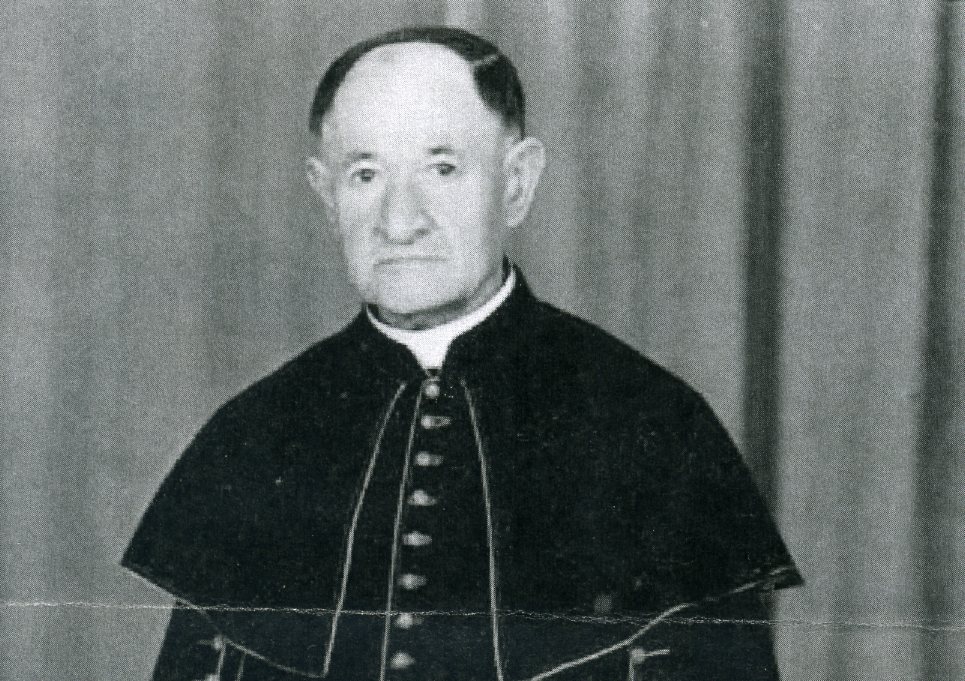
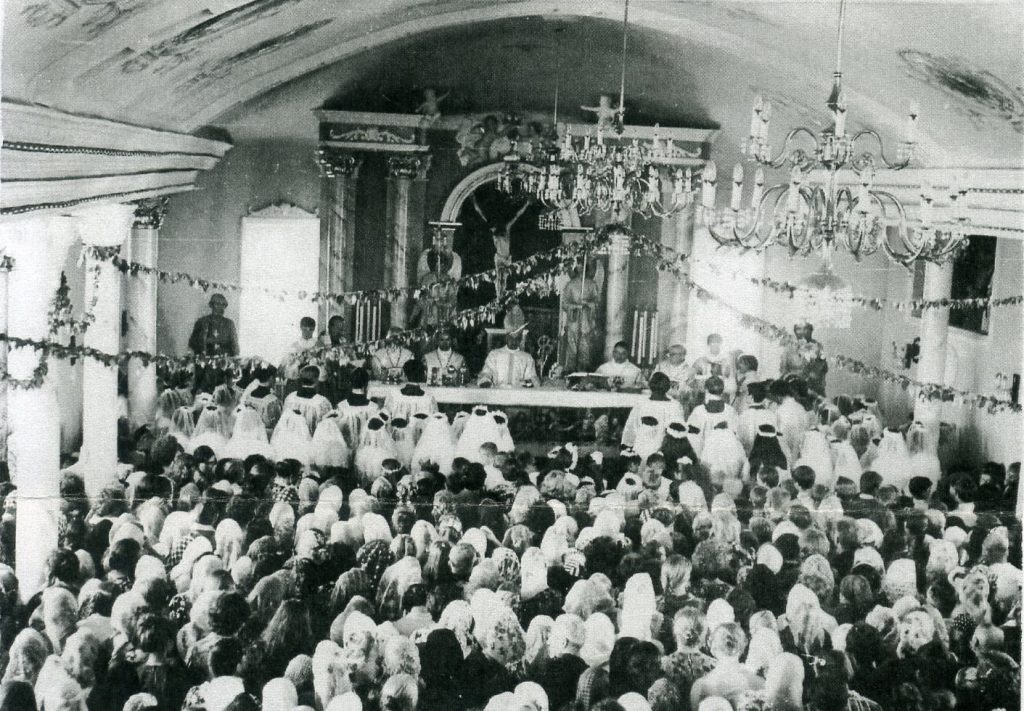
Oleksandr Chira was imprisoned in 1949 at Mukacheve verhaftet and released in 1956 or 1957. Having returned to Mukacheve, as soon as 1957 he was bannished by communist authorities and forced to leave within 48 hours, and he decided to go to Karaganda in the Kazakh SSR. In Karaganda he worked as pastor mainly in favour of the there living deportated German descending catholics of the Latin rite. These catholics knew he belonged to the Greek rite; however, Chira concentrated on the pastoral for Latins. Pastoral work for the byzantine catholics was possible through own priests. In his last years of life Bishop Chira rarely celebrated mass in Greek rite again. As supposed Papal Honorary Prelate he even sometimes celebrated pontifical masses; however, his episcopal dignity was unknown up to his death in 1983.During his last 10 or 15 years Chira spent each year his „holidays“ at Mukacheve. Indeed, he used this opportunity to ordain about 80 priests. The Eparchy of Mukacheve meanwhile opened a beatification process for Servant of God Oleksandr Chira.
In connection with four illegitimate bishop’s consecrations, which took place within the Basilian order in Ukraine on March 23, 2008, without consent of the Holy See, as possible consecrator the former Russian-orthodox priest Mychajlo Osidach (b. 1930, d. February 21, 2013) is mentioned, who himself reclaims to have been consecrated on September 6, 1989, by archbishop Sterniuk and bishop Kurtchaba. However, his consecration is not proofed and probably not occured. On March 29, 2012, the Congregation for the Doctrine of the Faith declared these „consecrations“ as invalid and the „bishops“ as excommunicated, who had declared themselves independant as „Byzantine Catholic Patriarchate“ in 2011.
1959, when he himself was still confined in gulag, Metropolitan Slipyj elected six administrators to care of Ukrainian catholics in the entire Soviet Union:
1. Volhynia, Great Ukraine and Belarus: Vasyl Velyckovskyj, C. SS. R.
2. Western Siberia: Mykola Revt‘
3. Central Siberia: Illia Blavatskyi, C. SS. R.
4. Eastern Siberia: Stepan Ratych
5. Kazakhstan: Olexiy Zarytskyi
6. Central Asia: Josafat Fedoryk, O. S. B. M.
At this occasion, he appointed Fr. Velyckovskyj titular bishop of Lutsk; he was consecrated by him in 1964 as mentioned before. Fr. Zarytskyi, born 1912 and ordained 1936, died on October 30, 1963, in prison. He was beatified on June 27, 2001.
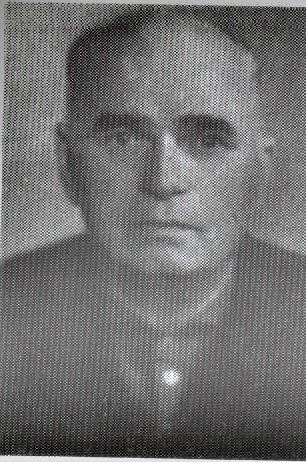




Bishop Vasyl Velyckovskyj, C. SS. R., Locum tenens of Lviv after Metropolitan Slipyj left the country, himself had to exile in 1972 and died in Canada a year later. His successor became his former auxiliary bishop Volodymyr Sterniuk, C. SS. R., who carried out this office up to 1991, when Cardinal Myroslav Ivan Lubachivky, Slipyj’s successor in exile, returned to Ukraine. The surviving hierarchs were confirmed by the Holy See on January 16, 1911, after the fall of the system; during his pastoral visit to Ukraine, John Paul II beatified on June 27, 2001, bishops Vasyl Velyckovskyj, Symeon Lukac and Ivan Slezyuk.
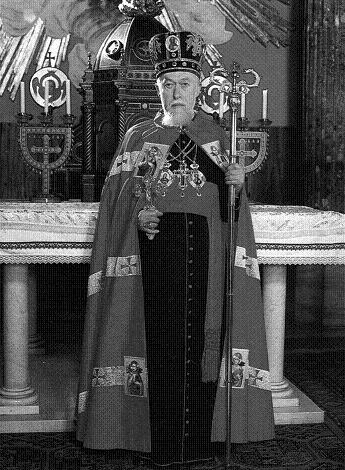
A special status had three additional clandestine bishops. On April 2, 1977, Cardinal Slipyj consecrated without co-consecrators (relating to other sources, with co-consecrators Isidore Borecky and Ivan Prasko) and without papal consense Ivan Choma, Stefan Czmil and Lubomyr Husar. These consecrations cursed heavy irritations. Only on February 22, 1996, these bishops wre acknowledged; background of Slipyj’s step obviously was his will to demonstrate his autonomy as patriarch. No-one of these three bishops worked in Ukraine. Bishop Husar, who died in 2017, was head of the Ukrainian church and Cardinal-Major Archbishop of Kyiv-Halyč from 2001 up to 2011. For bishop Czmil, the synod opened a beatification process in 2008.
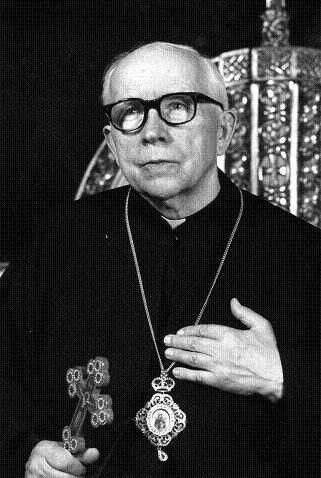
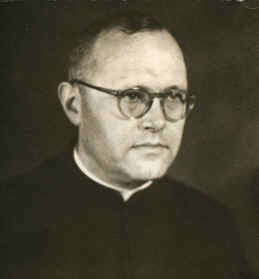

Armenians had no own bishop after Archbishop Teodorowicz died in 1938; Father Dionisiy Kaetanowicz worked as Administrator up to 1944. Afterwards the flock ceased to exist.
Also the Latin rite church was not able to appoint an official bishop for Ukraine. Prelate Markus Glaser, a German from the Volga region, was appointed Apostolic Administrator of Transnistria in July 1942 with residence in Odessa; in 1943 he became titular bishop. In 1944 he had to leave his mission agfter the Red Army conquered the area. Kamieniec and Zhytomyr were nominally administered by adminisUnmittelbar nach seiner Wahl bestimmte Johannes XXIII. den Priester Wojciech Stanisław Olszowski zum Titularbischof von Atribi und Apostolischen Administrator für die Lateiner in Kyiv und der ganzen Ukraine. Der NKWD fing das Ernennungsschreiben ab und schob Olszowski nach Polen ab. Im Mai 1959 wurde die Ernennung widerrufen, ohne dass Olszowski je von seiner Wahl erfuhr.Unmittelbar nach seiner Wahl bestimmte Johannes XXIII. den Priester Wojciech Stanisław Olszowski zum Titularbischof von Atribi und Apostolischen Administrator für die Lateiner in Kyiv und der ganzen Ukraine. Der NKWD fing das Ernennungsschreiben ab und schob Olszowski nach Polen ab. Im Mai 1959 wurde die Ernennung widerrufen, ohne dass Olszowski je von seiner Wahl erfuhr.trators beyond the rank of a bishop, but during 1950s both fell victim of terror. Lviv and Lutsk stayed vacant.
Immediately after his election, John XXIII. appointed Rev. Wojciech Stanisław Olszowski as titular bishop of Atribi and Apostolic Administrator of Kyiv and all Ukraine. The NKVD picked the nomination decree and deported Olszowski to his native Poland. In May 1959 the Holy See revoked the appointment; Fr. Olszowski never knew about his election.
On January 22, 1962, John XXIII gave order to Stefan Cardinal Wyszynski, Primate of Poland, to choose a candidate for episcopacy for the Roman catholics in Ukraine and to consecrate him secretly. On June 30, 1967, the Primate, under assistance of Lucjan Bernacki and Jan Czerniak, consecrated in the private chapel of his residence at Gniezno Jan Cienski.
The photos of this page were taken by the archives of Hofrat Dr. Manfred Kierein, Vienna, of Andreas Brender, M. A., Kirchzarten, Fr. Manuil Pyshkovych, M. S. U., Univ, and of the author. The author sincerely thanks the Most Reverend Bishop Joseph Werth of the Diocese of the Transfiguration of the Lord in Novosibirsk, who kindly allowed to publish the photos of Bishop Chira and who gave additional details on Bishop Chira’s life on July 28, 2011.
SEE ALSO: